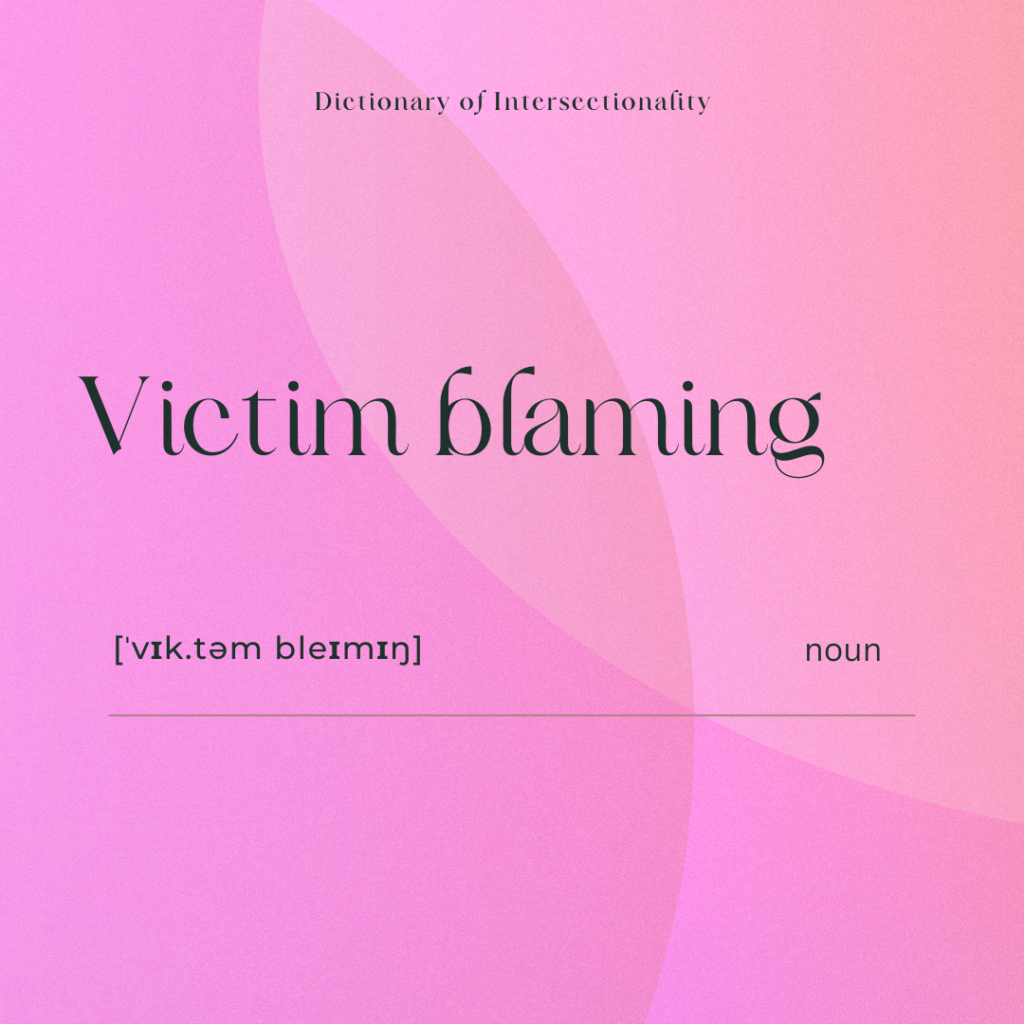
“What did you expect going out dressed like that?”
“Why didn’t they fight back?”
“You shouldn’t have gone home with them!”
“Why did they get so drunk?”
Victim blaming is a social phenomenon in which responsibility for traumatic events is wrongly placed on the victim rather than the offender. This leads to psychological distancing, the rationalization of bystander inaction and the creation of a defence mechanism against vulnerability.
In cases such as sexual violence, victim blaming wrongly assigns blame to victims based on clothing or behaviour, undermining their rights and the importance of holding perpetrators accountable.
Misconceptions about victims, perpetrators and the nature of violence feed victim blaming. Victims can be wrongly seen as passive or invited to suffer harm, while perpetrators are seen as compelled by uncontrollable powers. The most common reasons often result from a desire for control and security. Refusal to acknowledge the harm caused by trusted people contributes to the persistence of victim-blaming attitudes.
Victim blaming has a significant impact on innocent individuals, preventing them from reporting other crimes due to increased distress and fear of further victimization. It hinders the support of confessions, the cooperation of witnesses, the authorities’ commitment to pursuing cases, jury convictions, prosecutors’ recommendations for imprisonment and judges’ decisions on imposing imprisonment. Engaging in victim blaming exacerbates fear, stigma and self-blame, for example, among survivors of sexual violence, contributing to their elimination.
Victim blaming in the media can be insensitive, painting victims in a negative light or implying that they deserve harm. This approach serves to perpetuate misconceptions and is ineffective in addressing the root causes of violence. It is essential to shift the focus from blaming victims to holding perpetrators accountable.
How to avoid victim blaming?
A collaborative, multi-factorial response is crucial to holding offenders accountable and supporting victims’ recovery.
Important key points are:
Education: Challenge stereotypes through awareness campaigns and training.
Public Discourse: Encourage empathy and shift focus from victims to perpetrators.
Media Responsibility: Promote ethical reporting to counter biased narratives.
Advocate for supportive policies and legal aid to protect victims and discourage victim blaming.
Community Support: Create supportive environments and resources for victims; that involves institutions such as courts, schools, health care providers, and social services.
See more resources
American Psychology Association Dictionary. https://dictionary.apa.org/blaming-the-victim Retrieved 13th November, 2023.
Oxford Dictionary. https://www.oxfordlearnersdictionaries.com/definition/english/victim-blaming Retrieved 13th November, 2023.
Canadian Resource Centre for Victims of Crime. https://crcvc.ca/docs/victim_blaming.pdf Retrieved 13th November, 2023.
Sexual Assault Center of Edmonton. https://www.sace.ca/learn/victim-blaming/ Retrieved 13th November, 2023.
